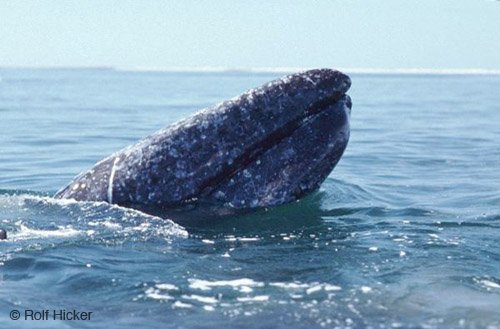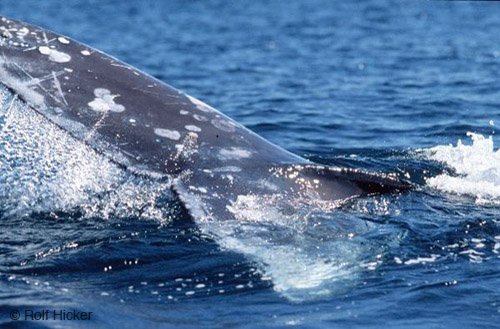Gray Whale Facts Information
Facts, information and pictures about Gray Whales.
Path: Animal Facts / Gray Whale Facts & Information
-
Gray Whales
- Scientific Name: Eschrichtius robustus
- Family: Baleen Whale
- Class: Marine Mammal
Gray Whale Facts: GENERAL Information:
The Gray Whale (please check out our gray whale pictures) travels between feeding and breeding grounds yearly. It reaches a length of about 15 metres, a weight of 36 tons and an age of 50-60 years. Gray Whales were once called devil fish because of their fierce defense behavior when hunted.
Gray Whale Facts: PHYSICAL CHARACTERISTICS:
The gray whale is a baleen whale or filter feeder and have 2-4 throat grooves, about 5 feet (1.4 m) long each. These grooves allow their throat to expand during the huge intake of water during filter feeding. The baleen plates in the gray whale's jaws have about 160 pairs of short, smooth baleen plates. The largest plates are about 15 inches long and 10 inches wide. The baleen bristles are thicker than those of the other baleen whales and are gray with yellowish bristles. The huge, narrow, pink tongue of the gray whale is used to dislodge the food from the baleen, and weighs about 1-1.5 tons (0.9-1.36 tonnes).
The gray whale's skin is usually gray with some blotchy white spots and has many parasites, including hundreds of pounds of barnacles and whale lice. There are little or no parasites on its right side because of the way it scrapes along the ocean bottom to feed.
They have a layer of blubber up to 10 inches (25 cm) thick and there are hairy bristles (vibrassae) on the gray whale's snout and the front of the head. These are used as tactile sensors, like cat's whiskers.
The gray whale has two broad flippers, no dorsal fin, and a series of small ridges along the its back near the flukes (tail).
Gray Whale Facts: DIET:
Gray whales (like all baleen whales) are seasonal feeders and carnivores and are bottom feeders. They sieve through the mud on the bottom of the ocean floor of the arctic with their baleen. They filter out small crustaceans, plankton, and mollusks (including squid and fish) from the ocean sediment. They usually feed on their right side, sucking up mouthfuls of mud filled with organic matter. Their baleen filters out the nourishing organic material (mostly amphipods), and the whale spits out the mud. The tongue loosens the amphipods (and other tiny food) from the baleen plates and the whale swallows the food. During migration and while in the warm breeding waters (about 3-5 months), gray whales eat very little. They live off their thick layer of blubber (fat).
Gray Whale Facts: SOCIAL STRUCTURE:
Gray whales congregated in small pods of about 3 whales, but the pod may have as many as 16 members. Large groups (up to hundreds of whales) form in feeding waters, but these are loose, temporary associations. They do not form long-term bonds. Two Pacific Ocean populations of Gray Whales exist: one small population travelling between the Sea of Okhotsk and southern Korea, and a larger one travelling between the waters off Alaska and the Baja California.
In the fall, the California Gray Whale starts a 2-3 month, 8000 - 11000km trip south along the west coast of the United States and Mexico. The animals travel in small groups. The destinations of the whales are the coastal waters of Baja California and the southern Sea of Cortez where they breed and the young are born.
Gray Whale Facts: COMMUNICATION:
Gray whales emit grunts, clicks, and whistling sounds. These sounds, and those produced by breaching may be used in communication with other gray whales.
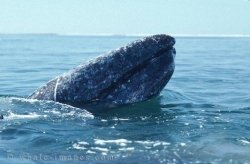
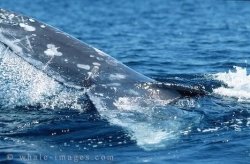
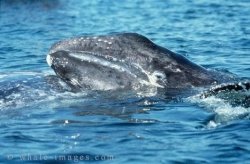
Keywords
- page
- Animal Facts (9)

